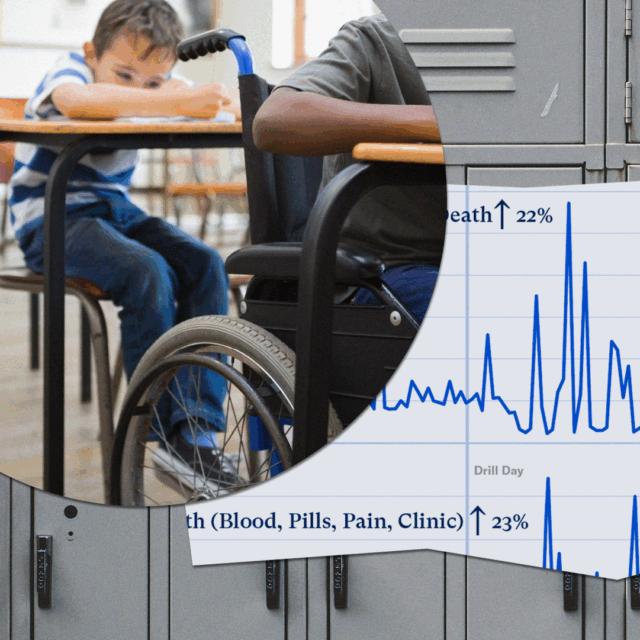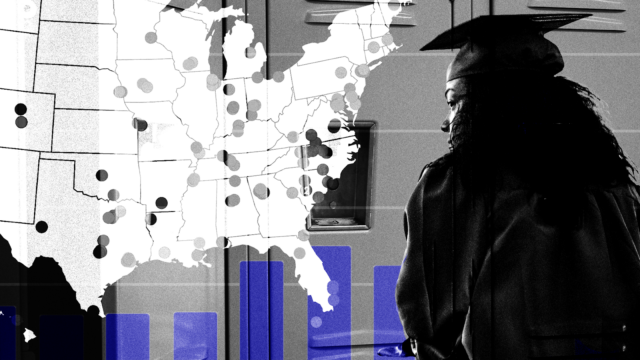Threat Identification and Assessment Programs in Schools
Threat Identification and Assessment Programs in Schools
What does this solve?
The most important thing that schools can do to prevent active shooter incidents—and gun violence overall—is to intervene before a person commits an act of violence. Threat assessment and identification programs allow schools to intervene to address potential violent behavior.
Threat assessment programs help keep guns out of schools. These programs help schools identify students who are at risk of committing violence and resolve these incidents by getting the students the help they need. Effective programs work to identify threats, determine if a student has access to guns, and ensure that there are enough professionals available to provide students with mental health services. Threat assessment programs are a critical part of comprehensive school safety plans.
Which states require in-school threat assessment teams?
11 states have adopted this policy
School Threat Assessment Teams
Alabama has not adopted this policy
School Threat Assessment Teams
Alaska has not adopted this policy
School Threat Assessment Teams
Arizona has not adopted this policy
School Threat Assessment Teams
Arkansas has not adopted this policy
School Threat Assessment Teams
California has not adopted this policy
School Threat Assessment Teams
Colorado has not adopted this policy
School Threat Assessment Teams
Connecticut has not adopted this policy
School Threat Assessment Teams
Delaware has not adopted this policy
School Threat Assessment Teams
Florida has adopted this policy
School Threat Assessment Teams
Georgia has not adopted this policy
School Threat Assessment Teams
Hawaii has not adopted this policy
School Threat Assessment Teams
Idaho has not adopted this policy
School Threat Assessment Teams
Illinois has adopted this policy
School Threat Assessment Teams
Indiana has not adopted this policy
School Threat Assessment Teams
Iowa has not adopted this policy
School Threat Assessment Teams
Kansas has not adopted this policy
School Threat Assessment Teams
Kentucky has adopted this policy
School Threat Assessment Teams
Louisiana has not adopted this policy
School Threat Assessment Teams
Maine has not adopted this policy
School Threat Assessment Teams
Maryland has adopted this policy
School Threat Assessment Teams
Massachusetts has not adopted this policy
School Threat Assessment Teams
Michigan has not adopted this policy
School Threat Assessment Teams
Minnesota has not adopted this policy
School Threat Assessment Teams
Mississippi has not adopted this policy
School Threat Assessment Teams
Missouri has not adopted this policy
School Threat Assessment Teams
Montana has not adopted this policy
School Threat Assessment Teams
Nebraska has not adopted this policy
School Threat Assessment Teams
Nevada has not adopted this policy
School Threat Assessment Teams
New Hampshire has not adopted this policy
School Threat Assessment Teams
New Jersey has not adopted this policy
School Threat Assessment Teams
New Mexico has not adopted this policy
School Threat Assessment Teams
New York has not adopted this policy
School Threat Assessment Teams
North Carolina has not adopted this policy
School Threat Assessment Teams
North Dakota has not adopted this policy
School Threat Assessment Teams
Ohio has adopted this policy
School Threat Assessment Teams
Oklahoma has not adopted this policy
School Threat Assessment Teams
Oregon has not adopted this policy
School Threat Assessment Teams
Pennsylvania has adopted this policy
School Threat Assessment Teams
Rhode Island has adopted this policy
School Threat Assessment Teams
South Carolina has not adopted this policy
School Threat Assessment Teams
South Dakota has not adopted this policy
School Threat Assessment Teams
Tennessee has not adopted this policy
School Threat Assessment Teams
Texas has adopted this policy
School Threat Assessment Teams
Utah has not adopted this policy
School Threat Assessment Teams
Vermont has adopted this policy
School Threat Assessment Teams
Virginia has adopted this policy
School Threat Assessment Teams
Washington has adopted this policy
School Threat Assessment Teams
West Virginia has not adopted this policy
School Threat Assessment Teams
Wisconsin has not adopted this policy
School Threat Assessment Teams
Wyoming has not adopted this policy
How it Works
Threat assessment programs help schools intervene to stop violent behavior.
Threat assessment teams are unanimously recommended by school safety experts including the federal Department of Homeland Security, the Department of Education, and the Federal Bureau of Investigation. The programs generally consist of multidisciplinary teams that are specifically trained to intervene at the earliest warning signs of potential violence and divert those who would do harm to themselves or others to appropriate treatment. These evidence-based programs are not designed to rely on discipline or the criminal justice system, and proper implementation is key to prevent undue harm to students of color or students with disabilities.
A model program is The Comprehensive Student Threat Assessment Guidelines (CSTAG), formerly known as the Virginia Student Threat Assessment Guidelines, which was created by Dr. Dewey Cornell at the University of Virginia. CSTAG is a national leader in school-based threat assessment. The program is also listed on the National Registry of Evidence-based Programs and Practices.
By the numbers
100%
100 percent of mass school shooters were current or former students.
77%
In 77 percent of school attacks at least one person, most often a peer, knew of the perpetrator’s plan.
0.5-3.5%
Several studies have found that schools that have used threat assessment programs see as few as 0.5 to 3.5 percent of students carry out a threat of violence or attempt to, with none of the threats that were carried out being serious threats to kill, shoot, or seriously injure someone.
Featured Resources

The Impact of Active Shooter Drills in Schools
Since the 1999 Columbine shooting, active shooter drills have proliferated in America’s school systems at an exponential rate.

Keeping Our Schools Safe: A Plan for Preventing Mass Shootings and Ending All Gun Violence in American Schools
The failure of our leaders to address the root causes of school gun violence is having lasting consequences for millions of children.

Mass Shootings in America
Only through understanding the true nature of mass shootings can we begin to seek evidence-based solutions.
All Resources
Threat Identification and Assessment Programs in Schools
All Resources
Unpacking Arming Teachers Laws
To prevent tragedies we must implement strong school safety solutions, but arming teachers is not one of them.
Report
Gun Violence Is Down in Our Cities. Why Not Also in Our Schools?
Report
Arming Teachers Introduces New Risks Into Schools
During the 2023–2024 school year, there were 49 deaths from gunfire on US school grounds and an additional 116 injuries.
Fact Sheet
How Can We Prevent Gun Violence in American Schools?
School leaders and policymakers must support and implement strong gun safety laws and school-based interventions.
Fact Sheet
Cómo detener los tiroteos y la violencia armada en las escuelas: Un plan para mantener seguros a los estudiantes
Necesitamos acciones significativas para mantener nuestras escuelas y las comunidades circundantes seguras en los Estados Unidos.
Report
How To Stop Shootings and Gun Violence in Schools: A Plan to Keep Students Safe
We need meaningful actions to keep our schools safe, actions that address what we know about gun violence in America’s schools.
Report
The Danger of Guns on Campus
Guns on campus are likely to lead to more shootings, homicides, and suicides, and they’re unlikely to prevent mass shootings.
Fact Sheet
Gunfire on School Grounds
Since 2013, Everytown has tracked incidents of gunfire on school grounds to learn how often youth are affected by gun violence.
Data Tracker
Fatal Gaps
More than ten years after the Virginia Tech shooting, progress in closing the gaps in state mental health records submissions is evident in several…
Report
